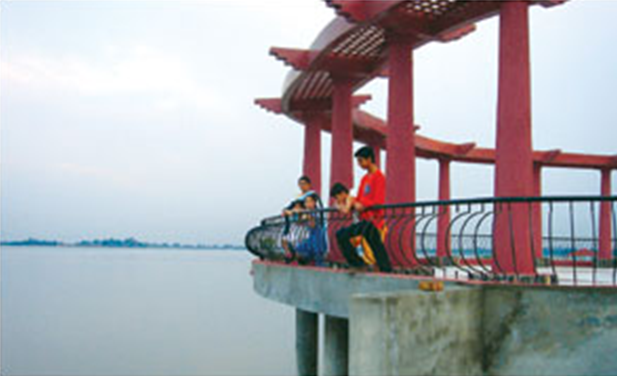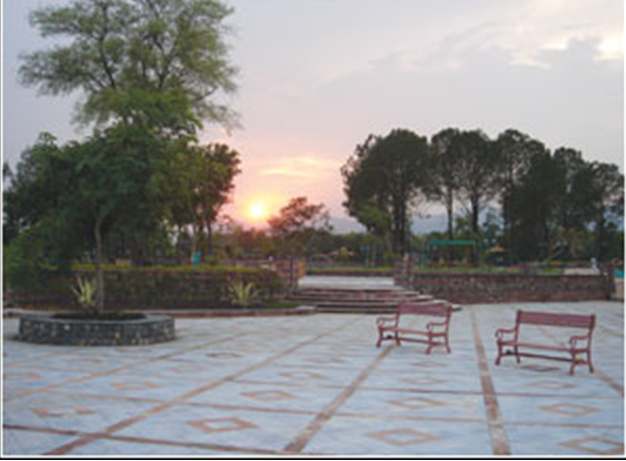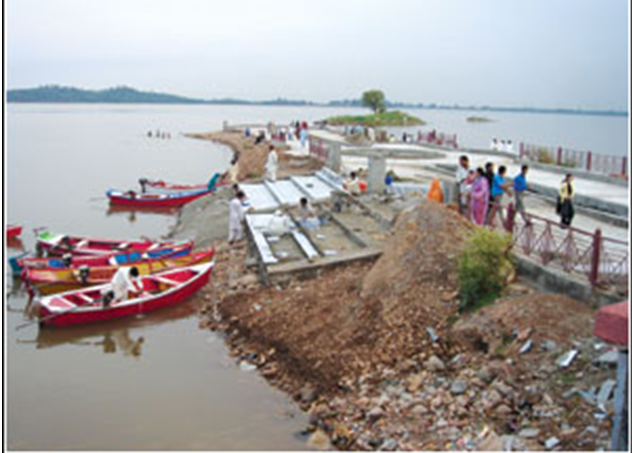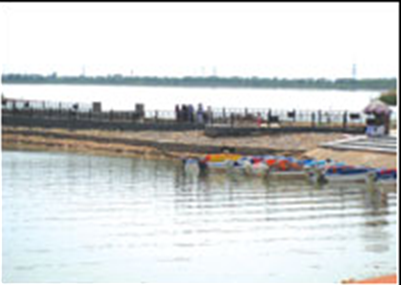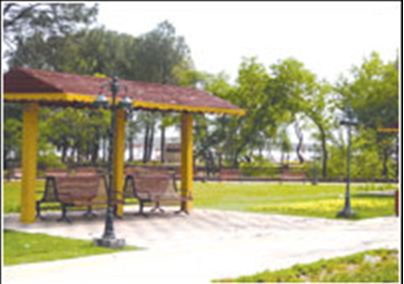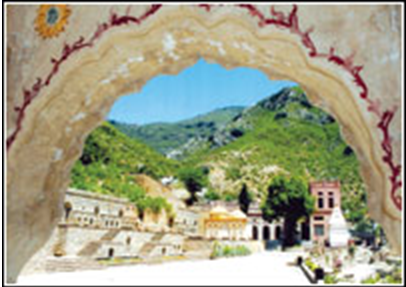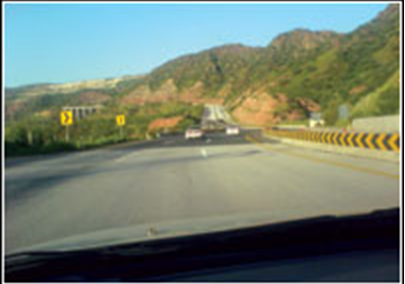Islamabad: P-Z
(→Islamabad from Karachi) |
|||
| (One intermediate revision by one user not shown) | |||
| Line 15: | Line 15: | ||
=Islamabad: P-Z = | =Islamabad: P-Z = | ||
| − | =Islamabad: Rawal Lake: 1= | + | ==Islamabad: Rawal Lake: 1== |
Rawal Lake promenade | Rawal Lake promenade | ||
| Line 100: | Line 100: | ||
Much has been done to give a facelift to the place — the garbage has been cleared away, sewerage lines laid across the village and the streets have been carpeted. The Capital Development Authority has approved a budget of more than Rs40 million for the project and it is to be carried out in two phases. In the second phase, more area will be acquired to expand the project further and more than 100 houses will be demolished to make way for a broad-walk and other tourist attractions. | Much has been done to give a facelift to the place — the garbage has been cleared away, sewerage lines laid across the village and the streets have been carpeted. The Capital Development Authority has approved a budget of more than Rs40 million for the project and it is to be carried out in two phases. In the second phase, more area will be acquired to expand the project further and more than 100 houses will be demolished to make way for a broad-walk and other tourist attractions. | ||
| − | |||
| − | |||
| − | |||
| − | |||
| − | |||
| − | |||
| − | |||
| − | |||
| − | |||
| − | |||
| − | |||
| − | |||
| − | |||
| − | |||
| − | |||
| − | |||
| − | |||
| − | |||
| − | |||
| − | |||
| − | |||
| − | |||
| − | |||
| − | |||
| − | |||
| − | |||
| − | |||
| − | |||
| − | |||
| − | |||
| − | |||
| − | |||
| − | |||
| − | |||
| − | |||
| − | |||
| − | |||
| − | |||
| − | |||
| − | |||
| − | |||
| − | |||
| − | |||
| − | |||
| − | |||
| − | |||
| − | |||
| − | |||
| − | |||
| − | |||
Latest revision as of 13:45, 14 December 2013
This is a collection of articles archived for the excellence of their content. Readers will be able to edit existing articles and post new articles directly |
Contents |
[edit] Islamabad: P-Z
[edit] Islamabad: Rawal Lake: 1
Rawal Lake promenade
Text and photographs by Nasruminallah Mian
Rawal Lake is eight kilometres from Islamabad’s Zero Point. It has a dam that regulates the outflow of water for domestic consumers in Rawalpindi and is used for irrigation purposes as well.
The lake has a well developed southern side consisting of gardens, a PTDC restaurant, a view of the Margalla Hills, Islamabad and the dam itself. Recently, the Capital Development Authority began development on the Murree Road (north) side building a lake-side promenade. It will have facilities like an amphitheatre, boating jetty and green lawns.
The development promises to be a good addition to Islamabad’s picnic spots. The old waterfront has an old canteen that serves cold drinks. The trees and the forests around the place have serenity and romance of their own which concrete surroundings lack.
Rawal Dam, however, is in the administrative control of the province and reportedly the Small Dams Authority of Punjab is locked in a dispute with the CDA over the development of the lake surroundings. They maintain that it will increase human activity on the lake which undoubtedly will damage the ecosystem there. Littering of the park and the lake side has already begun, courtesy our excellent civic sense. There were some cases of dead fish on the banks a few months ago. The analysis report has not been released yet, but some contamination may have been responsible.
Development of the north-side promenade is just one of the factors that will add to the risks of the ecology of the lake. Housing and facilities that have sprung up around the lake may have already done the damage. Banni Galla, a village to the east of the Dam is now a well developed residential colony, though not approved by the CDA, with houses on the waterfront.
However, all said and done, the promenade promises a good view of the Margallas, the lake and the striking sunsets.
[edit] Islamabad: Rawal Lake: 2
Lake View Park
By Gulrukh Tauseef
A visit to the Lake View Park is a perfect way to spend a wonderful Sunday afternoon with friends and family. The Rawal Lake is situated almost eight kilometres from Islamabads Zero Point and the Lake View Park that has been built there by the CDA is a marvellous partnership between man and nature.
Lush green lawns, sprawling gardens, beautifully manicured flowerbeds, a shimmering lake, gazebos, botanical gardens and a boating jetty… all are the highly welcoming attractions of the park.
It also offers facilities like an amphitheatre, skating rink, small food courts and a children’s area that guarantees hours of enjoyable activities for the whole family.
As soon as you park your car in one of the sprawling parking lots, there is an atmosphere of bustling activity and excitement. There are pony rides available for the children for Rs50 per pony. Many vendors have set up neat stalls at the entrance selling hot popcorns, burgers, French fries and cold juices, lemonades and ice creams.
When you enter the park, the lush greenery and the sheer beauty of the place takes your breath away. The path leading up to the boating jetty is lined with tall fronds and well pruned hedges. The centre path is used for walking while the sideways are used by golf carts and train on wheels to ferry visitors around the park.
The boats charge around Rs300 for a ride across the wide watery expanse but the absence of life jackets and life guards seem like a glaring omission. Another section of the lake is teeming with ducks and swans much to the delight of children scampering around the park.
There are plenty of garden seats and log tables for the picnickers. Many covered gazebos give shelter from the summer heat or rain while enhancing the beauty of the place. Wooden signs announce the directions to other attractions around the park. There is a Bar B Q area where grills are provided to the visitors to prepare their own food. In addition, there are many food stalls set up by well known restaurants offering a variety of mouth-watering snacks and meals to the visitors.
The Children’s Play area offers bouncing castle, trampoline, merry go rounds and other rides for smaller children. It is usually packed with excited kids having a time of their lives.
Another thoughtful gesture on the part of CDA is the provision of ramps for easy movement of prams and wheel chairs making sure that all areas are accessible to parents with toddlers and the elderly alike.
And the best thing of all: in spite of the thronging crowds, there is absolutely no littering. Perhaps the signs declaring that littering, spitting, plucking of flowers and throwing chewing gums will be punished and fined up to Rs300 have knocked some civic sense into our collective consciousness.
[edit] Islamabad: Saidpur
Heaven, renovated
Bilal Agha looks into all that is being done to turn Saidpur into a model village and a tourist attraction
Driving on the main Margalla Road, in Islamabad, the sign “Saidpur Village” sparks my curiosity. The story goes that in the early sixties, the Capital Development Authority purchased pockets of land from the residents of this village for a price tag of Rs100 to Rs300. However, “a Fransisi maimsahab bought the land and gave it back to the original owners as a gift,” says Muhammad Arshad, whose great-grandfathers had settled in Saidpur. The CDA denies all such claims and confirms that the land belongs to them.
If one goes by the records of the revenue department, it was in the 16th century, during the rule of Raja Ghar, that Said Khan came here and established orchards of mangoes, peaches and apricots and, till today, the footprints of Ghanadhra, Greek, Ashoka and Buddhist civilisations can be found in and around Saidpur.
It was during the mid ’60s that the government of Pakistan started to purchase small villages in the vicinity of Islamabad and merged them into it. As of now, four villages still remain as they are, Golra Sharif, Allah Ditta, Nurpur Shah and Saidpur. Saidpur has been a centre of controversy for the last few years. After failed attempts at vacating the owners from their houses in the village, the CDA kept a low profile for a while. However, the Chairman CDA, Kamran Lashari, had his mind set and eyes fixed on it. It was through a rehabilitation programme that the CDA was successful in relocating some villagers and developing the site.
Saidpur Model Village, as it has been renamed, is now a “living cultural village” within the urban setting of Islamabad.
The houses have been reconstructed using stones that were as close as possible to the original and decorated with terracotta motifs. The preservation of a mandir, a gurdawara and a haveli located in the vicinity and stones reproduced to look like those of the Ghandhara civilisation are all part of the plan to make the site a tourist attraction.
The Hindu temple has been turned into a museum, whereas work on restaurants, a café and kiosks is near completion. The plan also includes an arts and craft bazaar, where artisans, from all the four provinces, can display their goods and promote small industry products, cutting down the middleman’s commission.
The houses preserved at the site carry a mix of original, recreated or reproduced stones. The shops have been given an aesthetic facelift but are not reflective of the architecture of the old houses.
It is a tourist heaven, with its quaint market and narrow streets, old houses with carved wooden doors and windows, and the added attractions of the Zinda Pir’s bethak and the shrine of a holy woman. It is enchanting to see villagers lighting diyaas at this tomb and paying respects.
Much has been done to give a facelift to the place — the garbage has been cleared away, sewerage lines laid across the village and the streets have been carpeted. The Capital Development Authority has approved a budget of more than Rs40 million for the project and it is to be carried out in two phases. In the second phase, more area will be acquired to expand the project further and more than 100 houses will be demolished to make way for a broad-walk and other tourist attractions.
